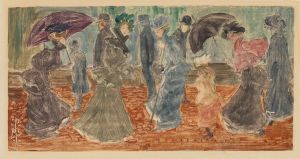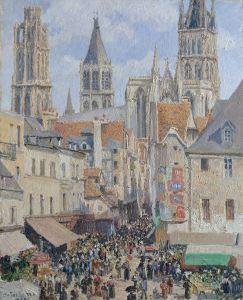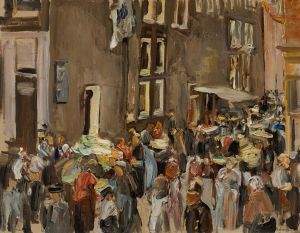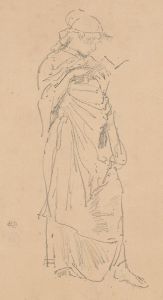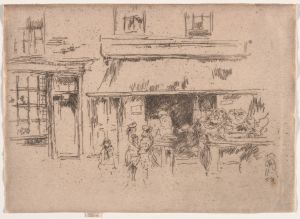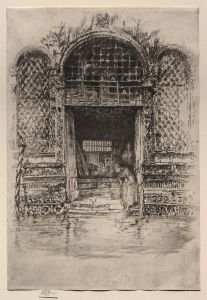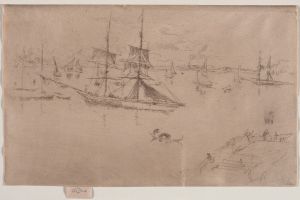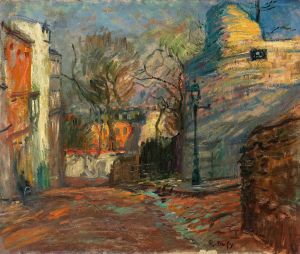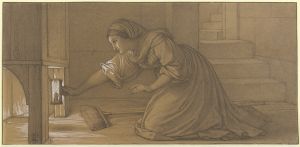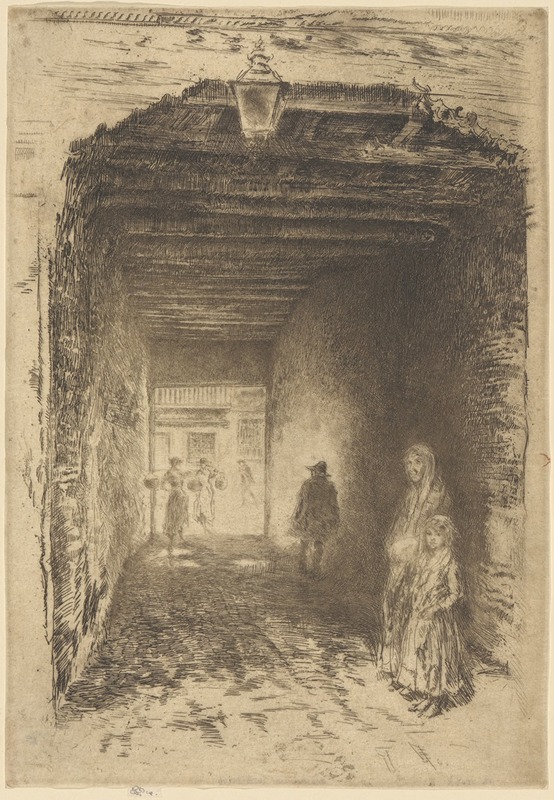
The Beggars
A hand-painted replica of James Abbott McNeill Whistler’s masterpiece The Beggars, meticulously crafted by professional artists to capture the true essence of the original. Each piece is created with museum-quality canvas and rare mineral pigments, carefully painted by experienced artists with delicate brushstrokes and rich, layered colors to perfectly recreate the texture of the original artwork. Unlike machine-printed reproductions, this hand-painted version brings the painting to life, infused with the artist’s emotions and skill in every stroke. Whether for personal collection or home decoration, it instantly elevates the artistic atmosphere of any space.
James Abbott McNeill Whistler was an American artist known for his significant contributions to the art world during the 19th century. One of his works, "The Beggars," is a notable example of his etching and drypoint techniques. Whistler's work is often associated with the Aesthetic Movement, which emphasized the visual and sensual qualities of art and design over practical, moral, or narrative considerations.
"The Beggars" is part of Whistler's "Thames Set," a series of etchings created in the early 1850s. This series was inspired by the scenes along the River Thames in London, capturing the everyday life and environment of the city during that period. Whistler's etchings from this set are renowned for their detailed and atmospheric portrayal of urban life, showcasing his skill in capturing the essence of the bustling city and its inhabitants.
In "The Beggars," Whistler depicts a group of impoverished individuals, capturing the stark reality of poverty in 19th-century London. The composition is characterized by its intricate line work and attention to detail, which are hallmarks of Whistler's etching style. The figures are rendered with a sense of realism and empathy, highlighting Whistler's ability to convey the human condition through his art.
Whistler's approach to etching was influenced by his study of the works of earlier masters such as Rembrandt and the French artist Charles Méryon. He was particularly drawn to the expressive potential of etching as a medium, which allowed him to experiment with line, texture, and tone. This experimentation is evident in "The Beggars," where Whistler uses a combination of fine lines and cross-hatching to create depth and contrast within the image.
The "Thames Set" was instrumental in establishing Whistler's reputation as a leading etcher of his time. These works were well-received by critics and collectors alike, and they played a significant role in the revival of interest in etching as an art form during the 19th century. Whistler's innovative techniques and his ability to capture the mood and atmosphere of urban life contributed to the enduring appeal of his etchings.
"The Beggars" and other works from the "Thames Set" reflect Whistler's broader artistic philosophy, which prioritized beauty and harmony over narrative content. This approach aligned with the principles of the Aesthetic Movement, which sought to elevate art above mere representation and imbue it with a sense of beauty and refinement.
Throughout his career, Whistler remained committed to exploring the possibilities of various artistic media, including painting, etching, and lithography. His work had a lasting impact on the art world, influencing subsequent generations of artists and contributing to the development of modern art.
In summary, "The Beggars" by James Abbott McNeill Whistler is a significant work within his oeuvre, exemplifying his mastery of etching and his ability to capture the complexities of urban life. Through his detailed and empathetic portrayal of his subjects, Whistler offers a glimpse into the social realities of 19th-century London, while also demonstrating his commitment to the aesthetic principles that defined his artistic vision.






